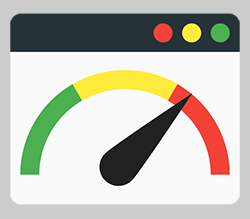 Slow loading times could be killing your website. That might sound a bit dramatic, but it’s been shown that even tiny increases in page loading times can have dramatic results on website conversion rates. Not only that, but search engines like Google now take into account the speed of a website, when deciding where to rank it in their results pages.
Slow loading times could be killing your website. That might sound a bit dramatic, but it’s been shown that even tiny increases in page loading times can have dramatic results on website conversion rates. Not only that, but search engines like Google now take into account the speed of a website, when deciding where to rank it in their results pages.
Therefore, it’s in your best interests, as well of those of your audience, to ensure that your WordPress website loads as quickly as possible. While you might be wondering how you can go about making your WordPress website load faster, the good news is that there are plenty of ways you can improve its performance.
From installing plugins, switching to a faster theme, and upgrading to a higher performance web host, there is lots you can do – both free and paid – to improve the speed of your website.
Whether your website is for fun, or for profit, it makes sense to do all you can to improve its loading times. By following this guide to making your WordPress website lighting fast, you should be able to deliver a more positive user experience, increase the rank of your website in the search engines, and improve your conversion rates.
So to get started, let’s take a look at how you can test the current speed of your website, as after all, you can only improve what you can measure.
How to Test the Speed of Your Website
Maybe your website is already sufficiently optimized and is loading as quickly as it possibly can. If that is the case, then great, you don’t need to read the rest of the article. But for the other 90% of our readers, there is probably at least a little bit of room for improvement when it comes to how fast your pages are loading.
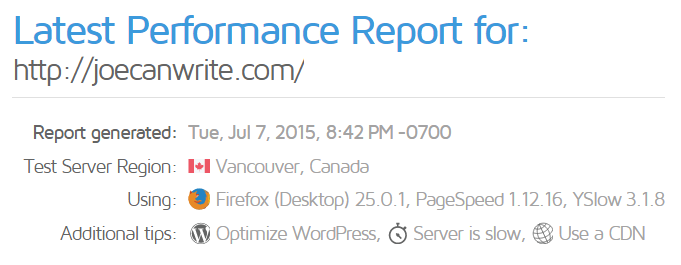
Before you start tinkering with your website in order to improve its loading times, it’s a good idea to evaluate its current performance. This will not only give you a benchmark to compare future results against, but most good website performance testing tools will give you some suggestions and pointers covering things you should focus on fixing or improving.
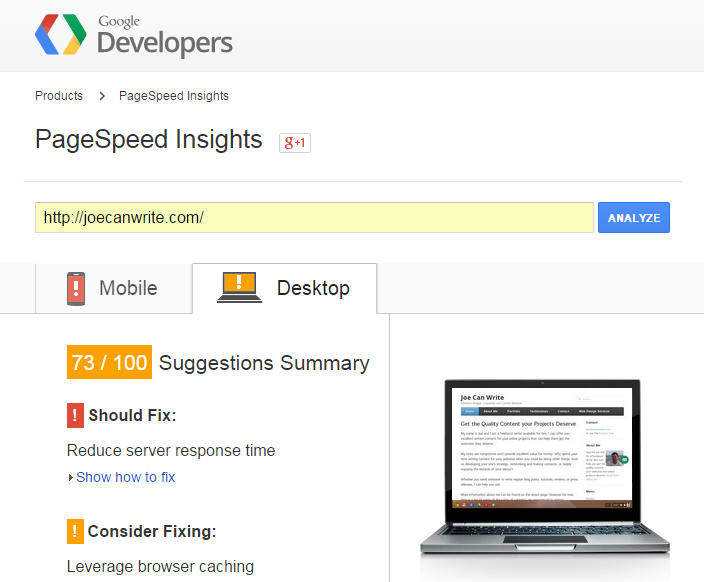
Thankfully there are a number of high quality testing services out there, which also happen to be free to use, including one from the company we are trying to impress with our loading times: Google. So before you get started with optimizing your WordPress website, here are some testing tools you can use to evaluate the current situation:
Some services give you the option of choosing a physical location to run the test from. If this is the case, be sure to use the same location, as well as any of the other settings that are on offer, each time you run the test. Doing so will help to generate consistent results for your comparison.
Update Your Plugins and Themes
Now you know how fast your website is, let’s get started on improving this important metric.
For security reasons, keeping the plugins and themes you are using on your website up to date is an essential task you should be carrying out in order to keep your WordPress website secure.
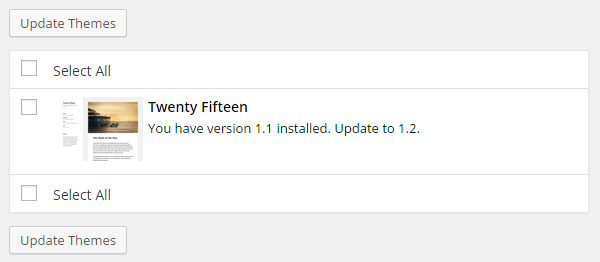
However, as these items are updated and improved by their developers, there is a good chance that they may be optimized for improved loading times. Therefore, it’s doubly vital that you keep an eye on your website to ensure all of its components are up to date, including the core WordPress software itself.
Thankfully WordPress makes it very easy to check whether each of the individual themes and plugins installed on your website are up to date or not. Simply log into your admin area and look for the updates icon in the top left hand corner of the dashboard.

Clicking on the icon takes you to the page where you can select with items to update. Please ensure you have a good WordPress backup solution in place before carrying out wholesale updates to you website. Also, be aware that updating a theme will most likely overwrite and customizations you’ve made to its code. If this applies to you, consider creating a child theme to preserve your changes when updating.
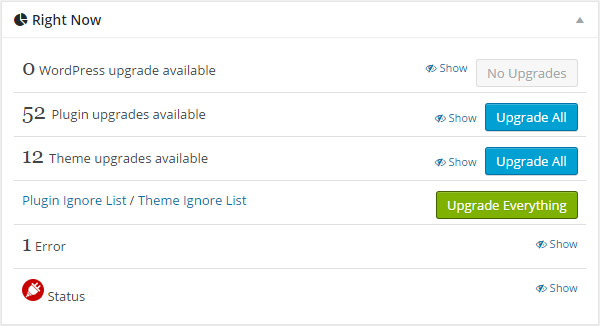
If you are managing multiple WordPress websites, then a service such as the free Jetpack Manage or MainWP plugin can give you access to a centralized dashboard. Through this single dashboard, you will them be able to update all of your websites and their plugins and themes.
Remove Redundant Themes and Plugins
As well as keeping your installed plugins and themes up to date, it’s well worth evaluating the active plugins on your website to check whether you are still using them. As each plugin has its own performance footprint, removing redundant plugins has the potential to speed up your website, without removing any necessary features.
In most cases you will only be using one or two themes on your WordPress website (including child themes). Therefore if you have any additional themes still sitting on your server, removing these unnecessary files could also improve the performance of your website. Also, any retired WordPress themes that are lingering on your server could also pose a security risk as they are no longer being updated by their creators.

Another action you could take, would be to consider swapping inefficient plugins for higher performing options that fulfill the same purpose. To get a good understanding as to which plugins on your website are affecting its performance the most, you can use the free P3 Plugin Performance Profiler plugin, or the reportedly superior, but premium $5 WP Performance Profiler plugin.
To help you find the fastest WordPress plugins available, the WP Speedster website has compared many free add-ons to help you choose best option for your website.
Install a WordPress Caching Plugin
Once you’ve ensured the WordPress software and plugins and themes are up to date on your website, the next step in improving its page load times is to install a caching plugin. In short, these caching plugins work by creating a static version of your WordPress website, causing it to load faster each time it’s accessed by a visitor.
There are three main WordPress caching plugins vying for your attention:
All but WP Rocket are free to use on your website. However, WP Rocket is much easier to setup, while also including a custom configuration service as part of the package, making it an attractive choice for the less technically inclined.
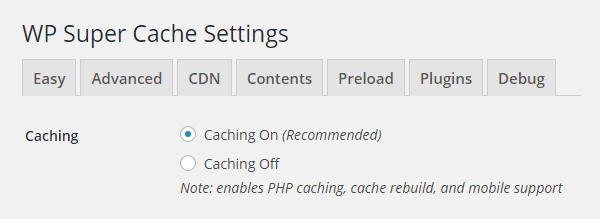
While I use WP Rocket on my main blog, by simply installing, activating, and then turning on caching with the free WP Super Cache plugin, I was able to increase the Google PageSpeed Insights score for my freelance blogger portfolio website from 73 to 84 – and that was without working through the wealth of settings and option to optimize the plugin further.
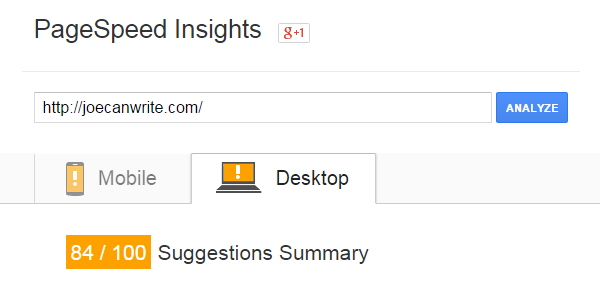
Whichever caching plugin you choose, adding one to your site can be a quick and easy way to improve the loading times of your website by a few points.
Optimize the Images of Your Website
If you upload images to your website without optimizing them, you could be forcing your visitors to download unnecessarily large files each time they access a page on your website. Failing to optimize the file size of your images could not only be slowing down your website, but also using up the (potentially) limited bandwidth available to you from your web hosting provider – not to mention consuming the data allowance of your visitors’ internet connections, something they probably won’t appreciate.
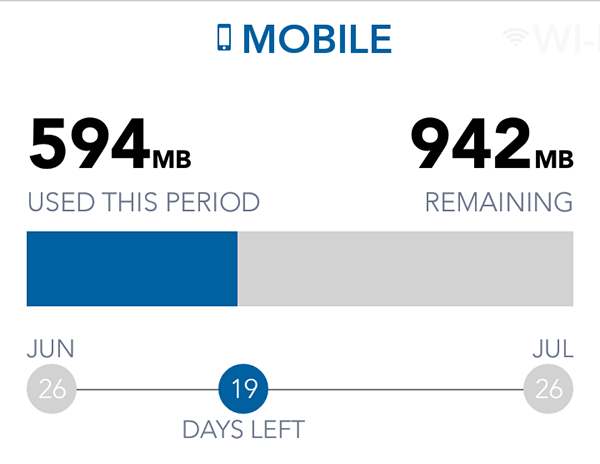
The first step to optimizing your images is to ensure they aren’t unnecessarily large in terms of their dimensions. If your WordPress theme of choice only supports images with a maximum width of 600px in its post and page content, try not to add images over this size.
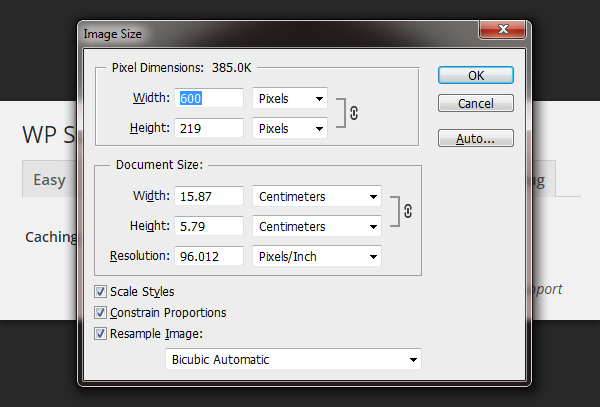
To avoid doing so, you can crop or resize the images before uploading them to your website, in software such as Photoshop. Alternatively, as WordPress now includes an image cropping and resizing feature of its own, you can perform this task during the upload process.
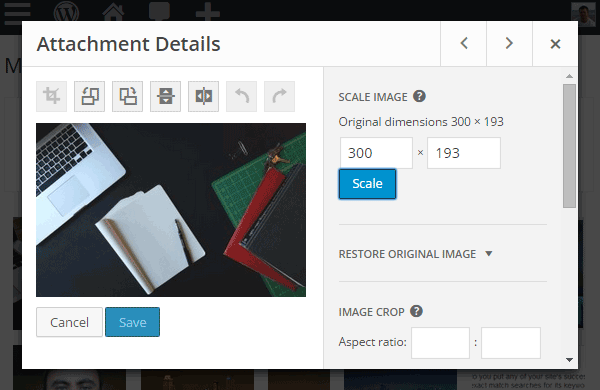
As well as reducing the image dimensions, you can also compress them to further to shrink their file size. If you are using advanced image editing software, such as Photoshop or Gimp, then you will be able to reduce the quality of an image in order to lower its file size.

In addition to using a software application, you can also make use of an online service to receive similar file size reduction results. Furthermore, there are a handful of WordPress plugins and services available that have been built to optimize the images on your website.
These online image optimization tools and plugins include:
- Optimizilla – upload and optimize up to 20 images at a time
- TinyPNG – online service for compressing PNG files
- WP Smush – freemium image optimization WordPress plugin
- EWWW Image Optimizer – another freemium WordPress plugin
- Kraken – image optimization and compression service that integrates with WordPress
As you can see there is a good selection of free and premium options for optimizing your website images in order to reduce their file size. Which one is best for you will depend on your needs and requirements, although using one of the free upload services is a great place to start.
A further step you could take is to implement the lazy loading of images on your website. Although it can result in a frustrating user experience, not loading images until they are needed can save on bandwidth and reduce page loading times. If you’d like to use this effect on your website, the free BJ Lazy Load plugin is a popular choice.

It’s worth pointing out that while WordPress and its themes have the ability to adjust the display size of an image if it’s too wide for the post area of your theme, the image isn’t actually being resized and a larger than necessary file size is still being served to your visitors. For this reason, it’s almost always a good idea to manually resize your large images, before inserting them into your content.
Upgrade Your Hosting Plan or Provider
Upgrading your web host might’ve been the first thing you thought of when thinking about how you could make your WordPress website go faster. However, unlike most of the other steps highlighted so far, switching web hosts can be a costly and time consuming endeavor.
If you are on an entry level, shared hosting package and receiving regular visitors to your website, then switching to a managed web host, optimized for WordPress websites could certainly increase the speed of your website. However, it could also significantly increase your monthly hosting costs, sometimes seeing them triple or more.
If you are making money from your website, whether directly through sales or lead generation, or less directly through brand promotion, then this could be an easily justifiable financial investment. On the other hand, if you are just a casual blogger, upgrading to a premium managed WordPress host might not make as much financial sense.
Popular managed WordPress hosts to consider include:
Another option open to you, is to stick with your current web hosting, but move up to the next tier of plan or package. This could see you move off of shared hosting, for example, while still keeping your monthly costs in check.
While it has the potential to greatly reduce the page load times of your website, perhaps more so than anything else, upgrading your WordPress website hosting will likely increase your outgoings.
Consider Using a CDN
Another option for increasing the speed of your website is to make use of the services of a content delivery network (CDN). In short, this type of service gives you the ability to store your website content, such as images, audio, and video files, in multiple data centers, located around the globe. This content is then served to your visitors from the data center that is closest to them, based on their physical location.
This global distribution of your content is all managed for you after the initial set up procedure, with the end result being faster loading content for your visitors.
Some web hosts include access to a content delivery network as part of their services, while with others you will need to choose a separate service provider. Popular content delivery network options include:
While the Photon service is free, the premium options usually charge for their services in a range of different ways, so be sure to evaluate their pricing plans to get the best deal for the needs of your website.
Switch to a Faster WordPress Theme
While the prospect of switching WordPress themes, and all the work that entails, might fill you with trepidation, it could well be that your current theme is holding back the performance of your website.

Badly coded, bloated, and outdated themes can negatively affect the loading times of a website, as can too many bells and whistles. If your theme is packed with animated sliders, background videos, and other nice but non-essential features, then it could be time for a refresh.
WordPress themes known for their fast loading times and high performance include:
The process of switching WordPress themes can be a big undertaking. However, if you’ve tried everything else and still haven’t managed to significantly increase your site speed, it’s definitely worth considering.
Conclusion
As we’ve just covered, having a fast loading websites can deliver many benefits. Not only can it improve its rank in the search engines, resulting in more traffic to your site, but it can also increase goal conversion rates, potentially generating more leads and revenue.
With a number of free options available, as well as some premium methods, there are plenty of ways you can improve the performance of your WordPress website. By measuring the current performance of your website, and then taking the necessary steps to improve its loading times and page speed, you can soon start reaping the benefits of a fast loading website.
If you have any questions, tips, or advice on helping a WordPress website to load faster, please share them in the comments section below.
It’s important to mention not to use a caching plugin if your host already includes this feature. It will likely make things worse.
Also, security plugins tend to be resource hogs so getting a host with security built in is super nice.
What about render blocking javascript and minification?
Joe, thanks for mentioning MainWP
Joe, thank you for mentioning WPSpeedster 🙂
Thank you for this article. Very helpful indeed especially for the beginners like me. Thank you. Keep it up.
Could you suggest wp theme that has good speed and load time?